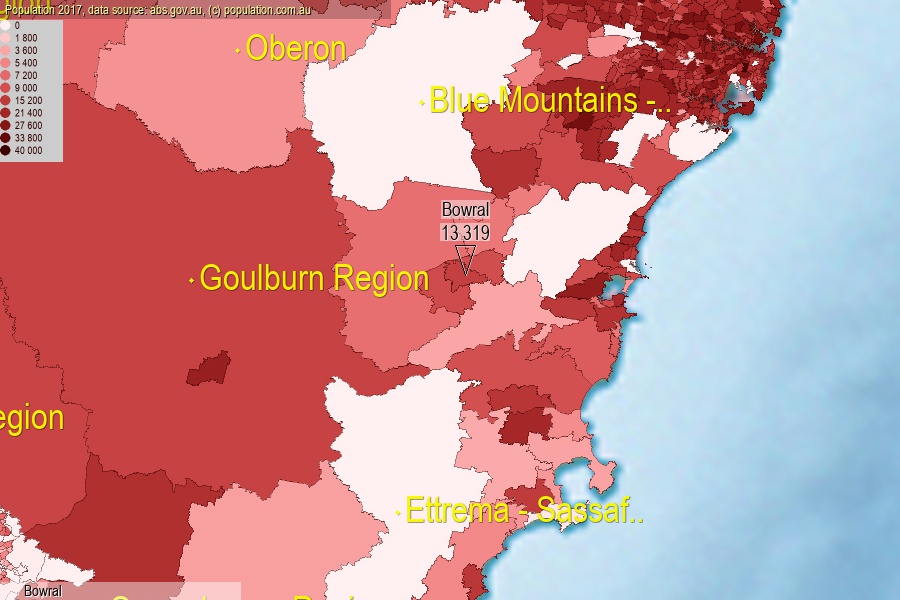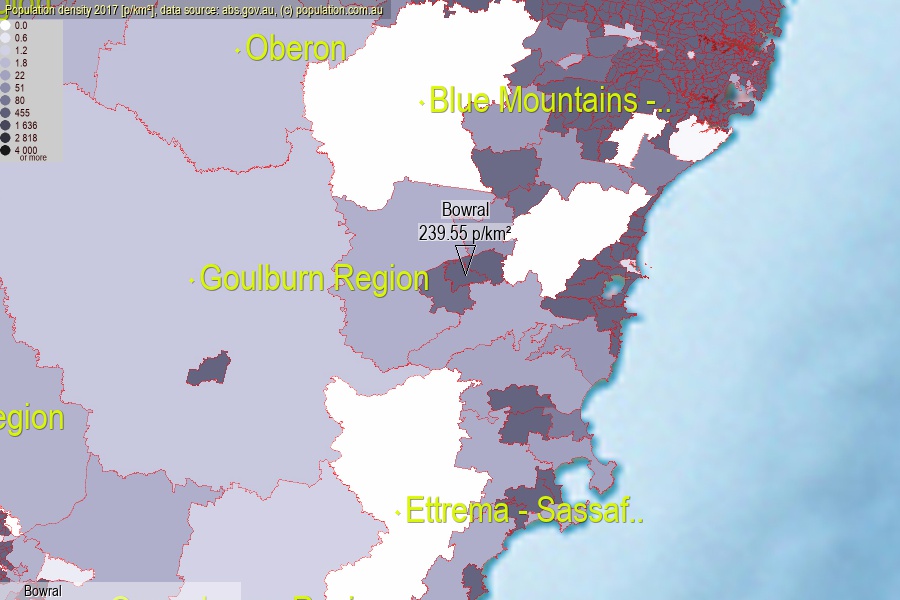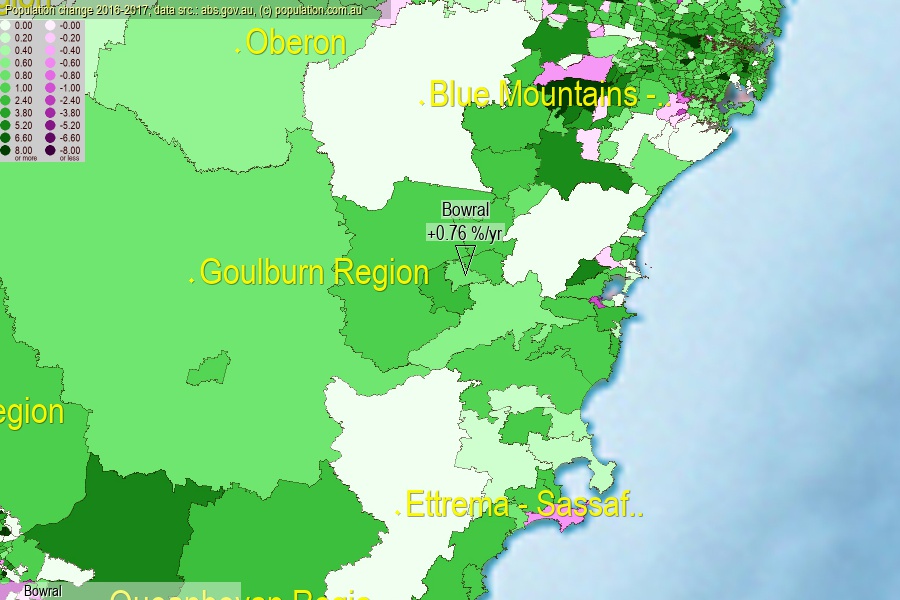 population.com.au
population.com.auLast official estimated population of Bowral (as Statistical Area Level 2) was 13 319 people (on 2017-06-30)[2]. This was 0.05% of total Australian population and 0.167% of NSW population. Area of Bowral is 55.60 km², in this year population density was 239.55 p/km² . If population growth rate would be same as in period 2016-2017 (+0.76%/yr), Bowral population in 2025 would be 14 155. [0]



Click to enlarge. Bowral is located in the center of the images.
Population [people], population density [p./km²] and population change [%/year] [2]
View borders » (new window) [4]
[1991-1992] +1.72 %/Yr.
[1992-1993] +0.90 %/Yr.
[1993-1994] +0.55 %/Yr.
[1994-1995] +2.36 %/Yr.
[1995-1996] +2.36 %/Yr.
[1996-1997] +3.12 %/Yr.
[1997-1998] +3.44 %/Yr.
[1998-1999] +4.00 %/Yr.
[1999-2000] +5.24 %/Yr.
[2000-2001] +3.76 %/Yr.
[2001-2002] +3.97 %/Yr.
[2002-2003] +1.86 %/Yr.
[2003-2004] +1.43 %/Yr.
[2004-2005] +1.02 %/Yr.
[2005-2006] +1.14 %/Yr.
[2006-2007] +1.09 %/Yr.
[2007-2008] +0.79 %/Yr.
[2008-2009] +1.28 %/Yr.
[2009-2010] +1.08 %/Yr.
[2010-2011] +1.00 %/Yr.
[2011-2012] +0.76 %/Yr.
[2012-2013] +0.95 %/Yr.
[2013-2014] +0.67 %/Yr.
[2014-2015] +0.77 %/Yr.
[2015-2016] +0.89 %/Yr.
[2016-2017] +0.76 %/Yr.
[0] Calculated with linear interpolation from officially estimated population
[1] Read more about SA2 and Australian Statistical Geography Standard (ASGS) on abs.gov.au
[2] Population data from Australian Bureau of Statistics (Population and density: 2017; change: 2016-2017)
[3] Digital Boundaries: Australian Statistical Geography Standard (ASGS) 2016.
[4] Border coordinates are simplifyed using Ramer-Douglas-Peucker algorithm.